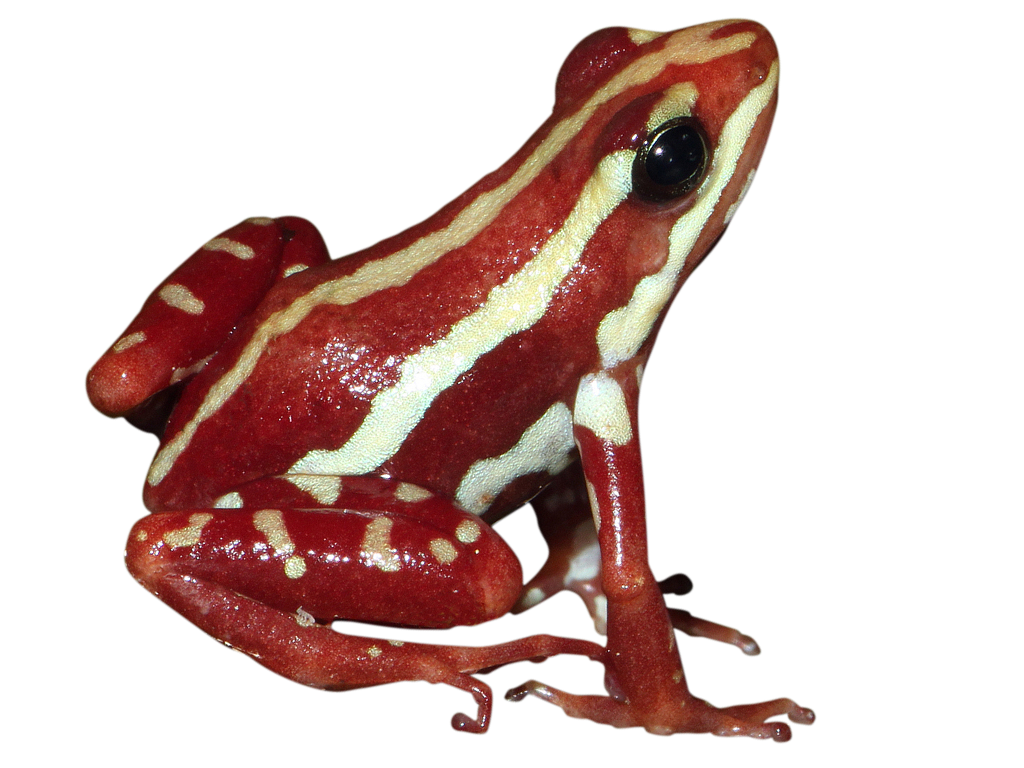Anthony’s poison arrow frog
Epipedobates anthonyi

Signals with red colour
Anthony’s poison arrow frog is active during the day and lives on the ground, usually around small bodies of water. It adapts well to high altitudes and can live at elevations of up to 2,000 metres, on the mountainsides of the Andes. Anthony’s poison arrow frog has a distinctive colour, with white-red stripes. As the frog has a poisonous skin, the red colour is thought to signal and deter potential predators. However, the poison that Anthony’s poison arrow frog has is not nearly as potent and poisonous as in many other frogs in the poison dart frog group.

Photo: AORP-CC-BY-SA
The male sounds like a canary
When it’s mating season for Anthony’s poison arrow frog, males croak loudly to attract females. The sound is reminiscent of the singing of canaries. Males mark territory, and the mating season is regulated by periods of particularly high humidity. The female lays 15–40 eggs at a time, and the male collects water and then wets the eggs. The eggs hatch after 2 weeks. The newly hatched tadpoles climb onto the back of the male and he carries them to a body of water, where they develop into adult poison dart frogs.
Distribution worldwide
South America, Peru and Ecuador.
White marking = Distribution

Threat based on the Red List

Trade regulations
CITES: Not listed.